
Hanna-Barbera was an American animation studio and production company, which was active from 1957 until its absorption into Warner Bros. Animation in 2001. Founded on July 7, 1957 by Tom and Jerry creators William Hanna and Joseph Barbera, it was headquartered on Cahuenga Blvd from 1960 to 1998, then subsequently at the Sherman Oaks Galleria in Sherman Oaks.

The golden age of American animation was a period in the history of U.S. animation that began with the popularization of sound synchronized cartoons in 1928 and gradually ended in the 1960s when theatrical animated shorts started to lose popularity to the newer medium of television. Animated media from after the golden age, especially on television, were produced on cheaper budgets and with more limited techniques between the 1960s and 1980s.
Animation in the United States in the television era was a period in the history of American animation that slowly set in with the decline of theatrical animated shorts and the popularization of television animation that started in the late 1950s, reached its peak during the 1970s, and ended around the mid-1980s. This era is characterized by low budgets, limited animation, an emphasis on television over the theater, and the general perception of cartoons being primarily for children. Due to the perceived cheap production values, poor animation, and mixed critical and commercial reception, the era is generally looked back upon negatively by critics and animation historians. The television animation of this period is often referred to as the dark age of American animation, while the theatrical animation from the time is sometimes referred as the bronze age.

The Huckleberry Hound Show is an American animated television series produced by Hanna-Barbera Productions, and the second series produced by the studio following The Ruff and Reddy Show. The show first aired in syndication on September 29, 1958, and was sponsored by Kellogg's. Three segments were included in the program: one featuring Huckleberry Hound, another with Pixie and Dixie and Mr. Jinks, which starred two mice who in each short found a new way to outwit the cat Mr. Jinks, and a third starring Yogi Bear and his friend Boo Boo. The series last aired on December 1, 1961.
Jonny Quest is a science fiction-adventure media franchise that revolves around the titular Jonny Quest, a boy who accompanies his scientist father on extraordinary adventures. The franchise started with a 1964–65 television series of the same name, and has come to include two subsequent television series, two television films, and three computer games.

Donald Earle Messick was an American voice actor, known for his performances in Hanna-Barbera cartoons.

Droopy is an animated character from the golden age of American animation. He is an anthropomorphic white Basset Hound with a droopy face. He was created in 1943 by Tex Avery for theatrical cartoon shorts produced by the Metro-Goldwyn-Mayer cartoon studio. Essentially the polar opposite of Avery's other MGM character, the loud and wacky Screwy Squirrel, Droopy moves slowly and lethargically, speaks in a jowly monotone voice, and—though hardly an imposing character—is shrewd enough to outwit his enemies. When finally roused to anger, often by a bad guy laughing heartily at him, Droopy is capable of beating adversaries many times his size with a comical thrashing.
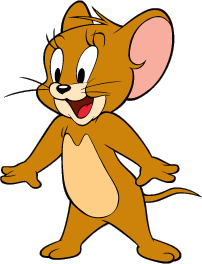
Gerald Jinx "Jerry" Mouse is a fictional character and one of the two titular characters in Metro-Goldwyn-Mayer's series of Tom and Jerry theatrical animated short films and other animated media, usually acting as the protagonist opposite his rival Tom Cat. Created by William Hanna and Joseph Barbera, Jerry is an anthropomorphic brown house mouse, who first appeared as a mouse named Jinx in the 1940 MGM animated short Puss Gets the Boot. Hanna gave the mouse's original name as "Jinx", while Barbera claimed the mouse went unnamed in his first appearance.
Tom and Jerry is an American animated media franchise and series of comedy short films created in 1940 by William Hanna and Joseph Barbera. Best known for its 161 theatrical short films by Metro-Goldwyn-Mayer, the series centers on the rivalry between the titular characters of a cat named Tom and a mouse named Jerry. Many shorts also feature several recurring characters.
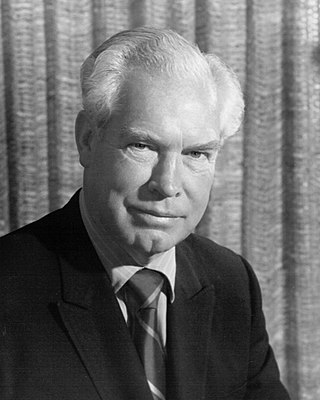
William Denby Hanna was an American animator, voice actor, and occasional musician who is best known for co-creating Tom and Jerry and providing the vocal effects for the series' title characters. Alongside Joseph Barbera, he also founded the animation studio and production company Hanna-Barbera.

Joseph Roland Barbera was an American animator and cartoonist, best known as the co-founder of the animation studio Hanna-Barbera.
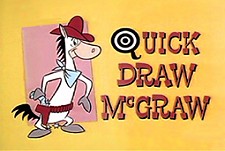
The Quick Draw McGraw Show is an American animated television series produced by Hanna-Barbera Productions, and their third television series overall after The Ruff and Reddy Show and The Huckleberry Hound Show. Voice actor Daws Butler performed the show's title character, Quick Draw McGraw.

Pixie and Dixie and Mr. Jinks is an animated television series produced by Hanna-Barbera Productions as part of The Huckleberry Hound Show from 1958 to 1961.

The Mumbly Cartoon Show is a Saturday morning animated series produced by Hanna-Barbera Productions and featuring the titular Mumbly, a cartoon dog detective. It was broadcast on ABC from September 11, 1976 to September 3, 1977 as part of The Tom and Jerry/Grape Ape/Mumbly Show. This compilation packaged reruns of the 1975 The Tom and Jerry/Grape Ape Show with Mumbly as a new component.
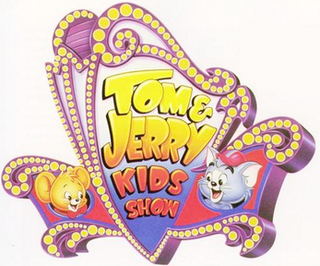
Tom & Jerry Kids is an American animated television series co-produced by Hanna-Barbera and Turner Entertainment Co., and starring the cat-and-mouse duo Tom and Jerry as toddlers. It premiered on Fox on September 8, 1990, airing as the first program of the children's programming block, Fox Kids, and was the second Tom and Jerry TV series to be produced by Hanna-Barbera following The Tom and Jerry Show in 1975.

Spike and Tyke is a short-lived theatrical animated short subject series, based upon the English bulldog father-and-son team from Metro-Goldwyn-Mayer's Tom and Jerry cartoons. The characters first appeared in the Tom and Jerry series in the 1940s.

The Metro-Goldwyn-Mayer cartoon studio was an American animation studio operated by Metro-Goldwyn-Mayer (MGM) during the Golden Age of American animation. Active from 1937 until 1957, the studio was responsible for producing animated shorts to accompany MGM feature films in Loew's Theaters, which included popular cartoon characters Tom, Jerry, Droopy, Butch, Spike, Tyke, and Barney Bear.
The Hanna-Barbera New Cartoon Series, a.k.a. The New Hanna-Barbera Cartoon Series or The Wally Gator Show, was a syndicated television package of animated cartoon series produced by Hanna-Barbera Productions, starting in 1962. The show included three unrelated short cartoon segments featuring talking animal characters:
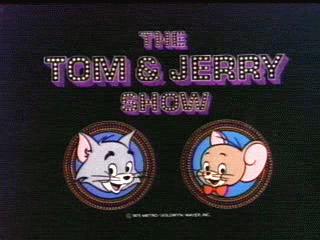
The Tom & Jerry Show is an American animated television series produced by Hanna-Barbera Productions in association with MGM Television. Based on the Tom and Jerry theatrical cartoon series, which was created by H-B co-founders and former MGM cartoon studio staff William Hanna and Joseph Barbera, the show originally aired on ABC from September 6 to December 13, 1975 as the first half of The Tom and Jerry/Grape Ape/Mumbly Show, with The Great Grape Ape Show representing the series' second half and The Mumbly Cartoon Show representing the series' third half. This series marked the first time that Tom and Jerry appeared in animated installments produced specifically for television.

Huckleberry "Huck" Hound is a fictional cartoon character, a blue anthropomorphic coonhound dog that speaks with a North Carolina Southern drawl. He first appeared in the series The Huckleberry Hound Show. The cartoon was one of six TV shows to win an Emmy Award in 1960 as an "Outstanding Achievement in the Field of Children's Programming"; the first animated series to receive such an award.
















